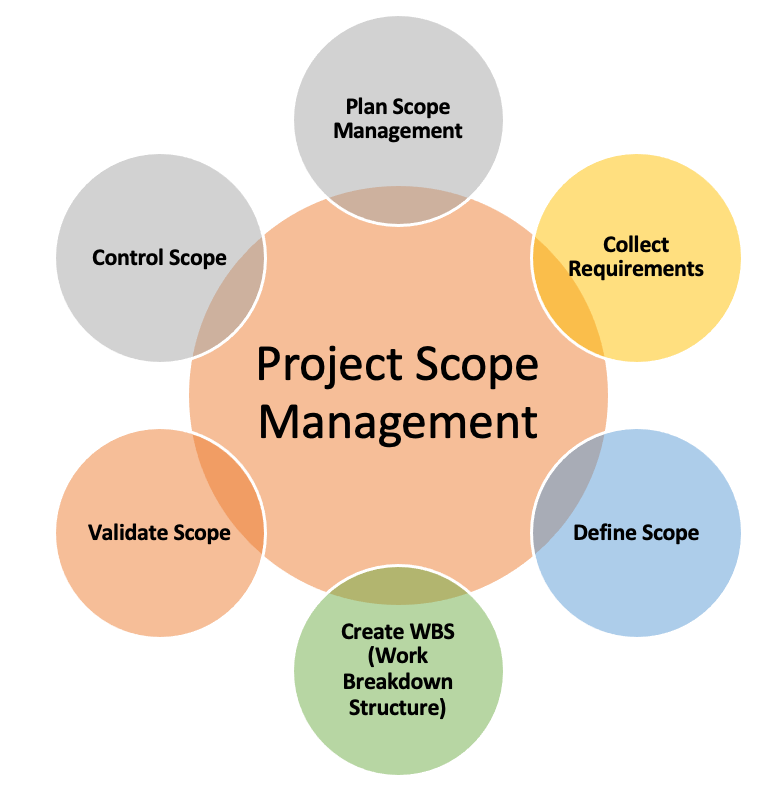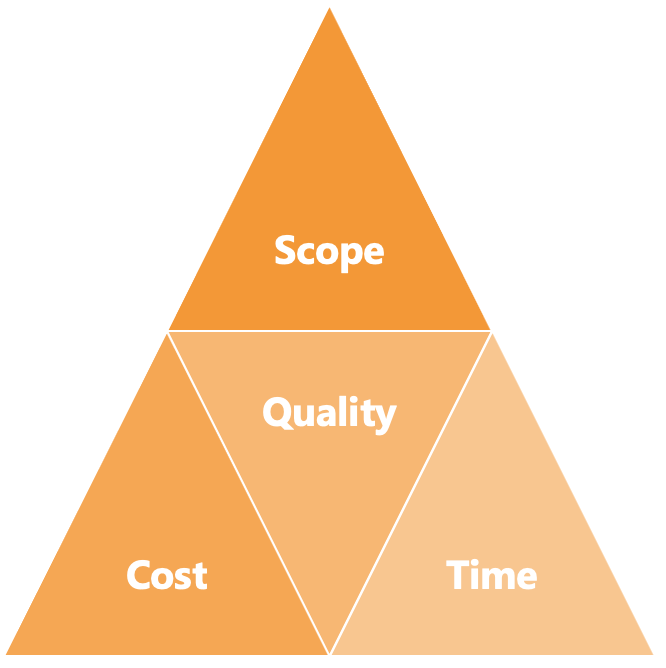What is Project Scope Management?

Project Scope Management is a critical knowledge area in project management that involves defining and controlling what work is required to be accomplished during a project. It encompasses activities such as planning, collecting requirements, defining scope, creating a Work Breakdown Structure (WBS), validating scope, and controlling scope. Let's explore each component in detail, along with relevant examples.
1. Plan Scope Management:
Planning scope management involves creating a strategy to determine how the project's scope will be defined, verified, and controlled throughout its lifecycle. This includes establishing processes, tools, and techniques to be used for scope management. In a software development project, the project manager would create a plan outlining how the project's scope will be determined, such as conducting stakeholder interviews, analyzing business requirements, and using prototyping techniques to clarify the scope.

2. Collect Requirements:
Collecting requirements involves identifying and documenting the stakeholders' needs and expectations regarding the project's outcomes. It includes gathering information through various techniques such as interviews, surveys, workshops, and document analysis. In a construction project, the team would engage with stakeholders, including the client, architects, and end-users, to gather requirements. This may involve conducting site visits, reviewing architectural drawings, and interviewing stakeholders to understand their specific needs and preferences.
3. Define Scope:
The most important task in Project Scope Management is defining the scope of the project. Defining scope is the process of developing a detailed description of the project's deliverables, boundaries, and objectives. It establishes what is included and excluded from the project, setting clear expectations for all stakeholders. Example: In an event planning project, defining the scope involves specifying the event's objectives, activities, and deliverables, such as venue selection, catering services, guest list, program schedule, and marketing collateral.
Contents of the Project Scope:
- Project Background
- Project Approach
- Strategic Alignment
- Impact, if the project is not approved
- Dependencies
- Project Organizational Structure
- Key Stakeholders
- Objectives
- Critical Success Factors
- Deliverables
- Inclusions/Exclusions
- Constraints
- Assumptions
- Timeline and Milestones
- Cost and Funding Sources
4. Create WBS (Work Breakdown Structure):
Creating a Work Breakdown Structure (WBS) is a technique to decompose the project's scope into smaller, manageable work packages. It involves breaking down the project deliverables into hierarchical components, facilitating better planning, estimation, and control. In a marketing campaign project, the WBS may include work packages such as market research, creative design, content development, social media advertising, and campaign analysis.
5. Validate Scope:
Validating scope involves formalizing the acceptance of completed project deliverables by the stakeholders. It ensures that the deliverables meet the specified requirements and are aligned with stakeholder expectations. In a website development project, the project team would present the completed website to the client for validation. The client would review the functionality, design, and content to ensure it meets their expectations before accepting the scope.
Establish the Project Priorities - Triple Constraints
Any change in the scope of the project almost always affects the total cost, required time, or the resulting quality of the project. The relationship between the Scope, Cost, and Time is an equilateral triangle - changing any one component will affect the other components.

6. Control Scope:
Controlling scope refers to managing and controlling changes to the project's scope throughout its lifecycle. It involves evaluating proposed changes, determining their impact on project objectives, and implementing a change control process to minimize scope creep. In an infrastructure project, the project manager would assess requested changes to the project's scope, such as adding additional features or modifying design specifications. They would evaluate the impact on cost, schedule, and resources before approving or rejecting the change requests.
By effectively managing project scope, organizations can ensure that projects stay on track, meet stakeholder expectations, deliver the intended outcomes, and complete Project Scope Management. This can help prevent scope creep, avoid unnecessary rework, and increase project success rates.









